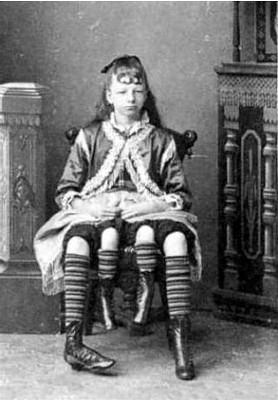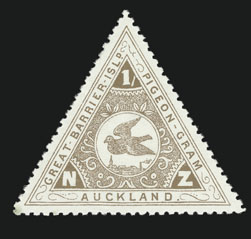
If you have one of these, hold on to it. Produced by a 1918 misprint, only 100 of these stamps have been found. That puts them among the most valuable stamps in the world — in 2003, an “Inverted Jenny” would sell for $150,000.

If you have one of these, hold on to it. Produced by a 1918 misprint, only 100 of these stamps have been found. That puts them among the most valuable stamps in the world — in 2003, an “Inverted Jenny” would sell for $150,000.
The Chevalier d’Eon (1728-1810) lived the first half of his life as a man and the second as a woman. Until age 49 d’Eon served as a diplomat and soldier in Louis XV’s France, fighting in the Seven Years’ War and spying in London for the king.
But in 1771 he claimed he was physically a woman and asked to be recognized as such. The government agreed, even financing a new wardrobe, and the chevalier spent his remaining 33 years as a woman, participating in fencing tournaments and even offering to lead a division of women soldiers against the Habsburgs.
Doctors who examined him after death discovered that his body was anatomically male.

Born in 1868, Myrtle Corbin had two separate pelvises, side by side — each of her large outer legs was paired with a small inner one. She could move the small ones, but they were too weak for walking.
The condition didn’t slow her down — she married a doctor at 19 and eventually gave birth to four daughters and a son.

When the English jurist and philosopher Jeremy Bentham died in 1832, his body was preserved and stored in a wooden cabinet at University College London. That was his request. It’s still there — you can see it at the end of the South Cloisters in the college’s main building. Occasionally it’s brought to council meetings, where Bentham is listed as “present but not voting.”
Unfortunately, students kept stealing the head (apparently a disquieting English custom), so the trustees replaced it with a wax one. Bentham’s real head is locked up in an undisclosed location.

Sadly, there are no Friendly’s restaurants on Shades of Death Road, which runs for fully 7 miles through Warren County, N.J.
The sign is stolen so frequently that local residents have started greasing the pole. That’s a good trick, but it’s not appropriate everywhere.
If a person stand beneath a railway girder-bridge with an open umbrella over his head, when a train is passing, the vibration of the air will be distinctly felt in the hand which grasps the umbrella, because the outspread surface collects and concentrates the waves into the focus of the handle.
— Barkham Burroughs’ Encyclopaedia of Astounding Facts and Useful Information, 1889

Fed on radioactive turnips, Rose Newman of Bourton-on-the-Water, England,
grew to the astonishing height of 50 feet.
Just kidding. Bourton-on-the-Water contains a 1:10 scale model of itself.
And, yes, the scale model contains a scale model.
In the Honduran province of Yoro, it rains fish. Each year between May and July there’s a heavy rainstorm that leaves hundreds of live fish on the ground, which local villagers cook and eat.
No one knows how this happens, but it’s been going on for more than a century. One town has even started an annual festival.

The world’s first airmail stamps were issued for the Great Barrier Pigeon-Gram Service, which carried messages from New Zealand’s Great Barrier Island to the mainland between 1898 and 1908.
It was pretty good: The fastest pigeon, aptly named Velocity, made the trip to Auckland in only 50 minutes, averaging an astounding 125 kph. That’s only 40 per cent slower than modern aircraft.

In 1964, grad student Donald Currey cut down a bristlecone pine in eastern Nevada to see how old it was.
It was 4,844 years old. He had killed the oldest thing in the world.
Bonus sad noble tree story here.